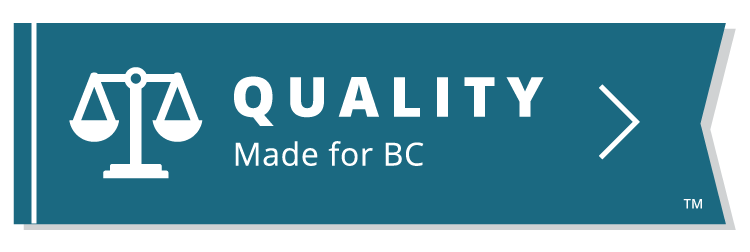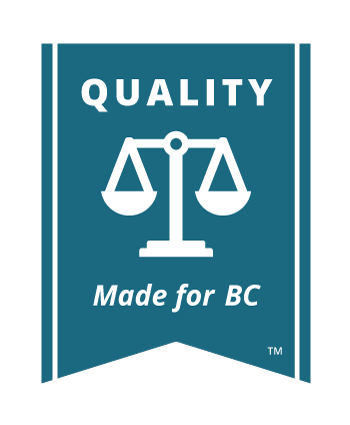Trial Process


If you haven’t settled your matter through mediation, the Settlement Conference or other court processes, your matter will go to trial. A trial is where both parties have the opportunity to present their case and have a judge make a binding final decision.
Most BC Small Claims Cases will have a regular trial. But in certain situations depending on the type and location of the case, you may proceed with a simplified or a summary trial.
| Court Location | Type of Claim | Type of Trial |
|---|---|---|
|
All Locations |
All matters other than those falling under simplified or summary trials |
Regular Trial |
|
Richmond and Robson Square |
$5,001 to $10,000 (excluding financial debt under summary trial rules, or personal injury claims) |
Simplified Trial |
|
Robson Square |
Involves loaning money or extending credit between $5,001 and $35,000 and one party is in the business of loaning money |
Summary Trial |
Regular Trial
Small Claims Court judges have a lot of control over the trial process. They may adapt the process to make it simpler or less formal depending on the case. You should follow the trial judge’s directions but your Small Claims Court trial may look like this:
- Opening statement by claimant
- Claimant calls their witnesses - defendant cross examines
- Opening statement by defendant
- Defendant calls their witnesses, if any- claimant cross examines
- Closing statements
- Judge’s decision

Key Term
Cross examination is when one party asks questions of another party’s witness
The judge may ask you and your witnesses questions. Most small claims trials take fewer than two hours, but it depends on the number of witnesses each party calls and the complexity of the case.
Changing the Date
If you cannot make the date set for your trial, you can apply to a judge for a new date under Rule 17(5.1) by filing an Application to a judge. The judge may only change the trial date after an application if they find that:
- The change in date is unavoidable and
- An injustice would occur if the trial goes ahead as originally scheduled

Read the Rules

Find the Form
Changing Your Method of Appearance
The default method of appearance for trial is in person but, you may apply to change your method of appearance by making an application to a judge. However, the judge conducting the trial may still require you to attend in person.

Read the Rules
If You Don’t Go
If the claimant doesn’t show up to the trial the claim may be dismissed. If the defendant doesn’t show, the judge may allow the claim and a payment order may be made against the defendant.

Find the Form
Simplified Trial (Richmond and Robson Square courts only)
At Robson Square and Richmond courthouses, all claims from $5,001 to $10,000 (except financial debt claims under Rule 9.2 and personal injury claims) go to a simplified trial. The registry will mail you a Notice of Trial with the trial date and trial statement form if you matter falls under this rule.
What to Expect
A justice of the peace (an experienced lawyer), who can also be called an adjudicator, will hear your case in a one-hour simplified trial. In most cases, you can expect the adjudicator to deliver his or her decision at the end of the trial.
At a simplified trial, the adjudicator will ask you to:
- Take an oath or affirm that you will tell the truth
- State the facts related to the claim
- File any documents on which you rely, and respond to the other party
- The adjudicator may ask you questions, ask you to swear to the truth of your trial statement, permit witnesses, and allow you to ask the other party questions
At the end of the trial, the judge will make a payment order, dismiss the claim or order that the claim be sent to a settlement conference, trial conference, or a trial.
How to Prepare
Complete the Trial Statement Form and file it with the registry. The Trial Statement should contain all the facts you will rely on at trial. You only have a short time to make your case, so be sure to be organized and make a list of all the important points you want to make. See Building Your Case.
The Trial Statement Form includes:
- A statement of fact in the order which events occured
- A calculation of the amount claimed
- Copies of relevant documents
- A list of witnesses and a brief summary of what they will each say
Before the simplified trial the adjudicator will review the trial statements filed by you and the other party.

Find the Form

Learn More
Claims from $5,001 to $10,000 in Richmond and Vancouver from the BC Provincial Court

DIY Tools
For guidance take a look at our Sample Trial Statement Form
Changing the Date
If you cannot make the date set for your simplified trial, you can request to have the date changed.
Steps to changing your trial date:
- Ask the other party to agree in writing to the change. If they agree, you can file a consent order at the registry
- If unable to agree- file an Application to the Registrar to the registry. The application must explain the reason you want to change the date and that you asked the other party to consent
- If the application is granted by the registrar, a new date will be set for your simplified trial

Find the Form
If You Don’t Go
If the claimant doesn’t show up to the trial the claim may be dismissed. If the defendant doesn’t show, the judge may allow the claim and a payment order may be made against the defendant.

Find the Form
Summary Trial - Robson Square Only
Small Claims cases go to summary trial if the claimant is in the business of lending money or extending credit and the claim is for a debt that arises from a loan of money or the extension of credit in the course of that business. The claim must be between $5,001 and $35,000. This type of trial is only available at the Robson Square Registry. Claims may only be filed at the court registry nearest where the defendant lives, carries on business, or where the transaction took place.

Read the Rules
How to Prepare
The Robson Square court registry in Vancouver will send you a notice showing the date of your summary trial. Summary trials can go very quickly so being organized and prepared is very important. To prepare:
- Gather and organize all your documents
- Write down the major points you want to tell the judge
- Think about questions you want to ask the other parties

DIY Tools
What to Expect
Judges decide summary trials. They usually take fewer than 30 minutes to complete. Summary trials do not have to follow the same formal rules of procedure and evidence as regular trials do.
At the summary trial, the judge may ask you to explain your case, respond to the other party and call witnesses. The judge does not have to comply with the formal rules of procedure and evidence and so have a lot of control over the process. You will be asked to take an oath or to affirm that you will tell the truth before giving your evidence.
At the end of the trial, the judge will make a payment order, dismiss the claim or order that the claim be sent to mediation or a trial conference.
Change the Date
If you cannot make the date set for your summary trial, you can request to have the date changed. Steps to changing your trial date:
- Ask the other party to agree in writing to the change. If they agree, you can file a consent order at the registry
- If unable to agree- file an Application to the Registrar to the registry. The application must explain the reason you want to change the date and that you asked the other party to consent
- If the application is granted by the registrar, a new date will be set for your simplified trial

Find the Form
If You Don’t Go
If the claimant doesn’t show up to the trial the claim may be dismissed. If the defendant doesn’t show, the judge may allow the claim and a payment order may be made against the defendant.

Find the Form
Can I bring someone to support me at trial?
Many people find bringing a trusted friend or family member to sit with them at trial helpful and comforting. A support person can take notes, help you stay organized, and provide emotional support but they cannot speak to the judge or speak on your behalf, except in exceptional circumstances and only with the judge’s permission. Also, A support person can be anyone, including a friend or relative, except someone who:
- Might be a witness in the hearing or trial
- Is paid by the litigant for their services as a support person
Unless a judge says otherwise, a support person can sit with you through most small claims processes (usually not a settlement conference or trial conference but you can ask the judge and they may allow it). See Bringing a support person to small claims court and The McKenzie Friend.






